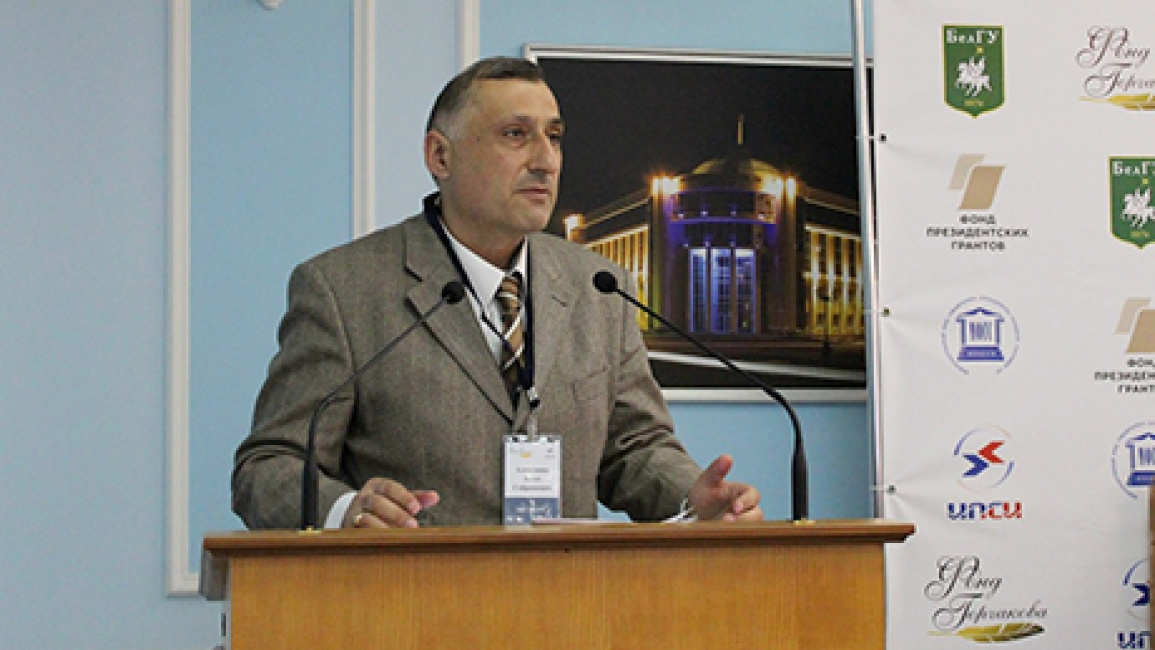- Main
- Node
- “ARMENIA, BY ITS EXAMPLE, SHOWS THAT IN CASE OF EFFECTIVE WORK, IT IS POSSIBLE TO USE THE OPPORTUNITIES OF BOTH THE EU AND THE EAEU.” ASHOT ALEKSANYAN
November 13, 2019 | 16:15
Society
“ARMENIA, BY ITS EXAMPLE, SHOWS THAT IN CASE OF EFFECTIVE WORK, IT IS POSSIBLE TO USE THE OPPORTUNITIES OF BOTH THE EU AND THE EAEU.” ASHOT ALEKSANYAN
Associate Professor at Chair of Theory and History of Political Science of Yerevan State University, Dr. Ashot Aleksanyan, took part in the International Foresight-Session “Cross-Border and Interregional Cooperation of the EAEU Member States”, which took place on October 15-17 in the city of Belgorod. The event was attended by over 80 experts from the regions of Russia, Armenia, Kazakhstan, Belarus, Kyrgyzstan, CIS countries, Latin America, Africa and the European Union.

YSU journalist Qnar Misakyan talked with Mr. Aleksanyan about his agenda and results in the forum, as well as about Armenia’s prospects for integration into the EAEU.
- Mr. Aleksanyan, tell us who organized the session, who participated in it and what events were held?
- The event was organized as part of a project using a grant from the President of the Russian Federation for the development of civil society provided by the Presidential Grants Fund (Project No. 18-2-002185 “International Foresight-Session “Cross-Border and Interregional Cooperation of the EAEU Member States””). The event was attended by over 80 experts from Russia, Armenia, Kazakhstan, Belarus, Kyrgyzstan, and the CIS countries, Latin America, Africa and the EU. On the first day of the session, on October 15, the Belgorod State National Research University hosted the International Scientific and Practical Conference “Public Diplomacy of the CIS Member States: the potential of the regions”, at which I also made a presentation. On October 16, on the basis of the collective work space “Boiling Point - Belgorod”, the International Round Table “Interactive Model of Public Diplomacy of the CIS Member States” was held as part of the project. On the last day of the session, October 17, an open lecture was held on “Technologies for Foresight-Design of Integration Processes”.
- What issues were discussed at the International Scientific and Practical Conference “Public Diplomacy of the CIS Member States: the potential of the regions”, and what was your report about?
-During the plenary session, reports were made by scientists and experts from the CIS countries, the EU and various regions of Russia. Representatives of the scientific community discussed issues of public diplomacy, integration of the CIS member states, cross-border cooperation and interregional interaction. My report was on social partnership as a component of the Eurasian social and cultural space. It was about the problems that exist in the EAEU region. The participants of the conference were curious about the problems that exist today, which I tried to answer during the report. In my opinion, there are certain gaps in social partnership. This can be overcome if the EAEU allows trade unions, business and all interested parties to actively participate in the EAEU public policy issues.
- And what issues were discussed during the round table on the topic “Interactive model of public diplomacy of the CIS member states?”

- During the round table, the main issues of trust in the field of public diplomacy in the digital era, the development of public diplomacy and the development of cross-border cooperation in the Eurasian region, the basic requirements for the development and application of grant support were discussed. Also, as part of the event, a press conference was held on the basis of the “Interfax-Belgorod” Media Center. Representatives of Kazakhstan, Belarus, Armenia, Moldova, Kyrgyzstan and Russia answered questions from journalists regarding the prospects for Eurasian integration. The participants in the press conference discussed current areas of cooperation, as well as the possibilities for the accession of new member states to the EAEU.
- Were issues related to the further integration of Armenia discussed?
- All participants were curious about what problems might arise after the 2018 revolution, and in response I explained that the processes taking place in Armenia require the EAEU to take into account the problems that exist in our society. Our country is different from other EAEU countries in terms of the political regime and the degree of established democracy. In addition, our country and Belarus are Eastern Partnership countries, but there are many reservations regarding authoritarian events and problems of civil society. Our country is in a favorable position in this regard. A good example of the difference between Armenia and other EAEU countries is the presence of a Public Council. This platform is not available in the EAEU countries and is an interesting example of how the government works with civil society.
- What topics were discussed during the open lecture on the last day of the session?
- I and Sergey Panteleev, Director of the Institute of Russian Abroad, and Todor G. Golunov, Professor at the Department of Political Science, Sociology and Cultural Studies St. Cyril and St. Methodius University of Veliko Tarnovo and other experts touched on the prospects for EU and EAEU integration, especially noting the problematic points of complementation of international projects. At the end of the event, representatives of leading universities in Armenia, Kazakhstan and Kyrgyzstan spoke in the author’s program “Peak Hour” (Chas Pik) on the basis of the VGTRK “Belgorod”, during which they discussed the existing prospects for scientific cooperation between the countries of the Eurasian Economic Union..
- Mr. Alexanyan whether Armenia can become a bridge between the EU and the EAEC?
- We are announcing this today, but, in my opinion, this is a complex process. The EU does not recognize the EAEU as a subject. We are a small country to be a bridge, and even if we take such a geopolitical position. However, Armenia shows by its example that it is possible to use the opportunities of both the EU and the EAEU if it works efficiently.

The economic component of our country is associated with the EAEU, and it is necessary to develop economic infrastructure. If Iran joins this alliance in the near future, this will create an opportunity to overcome the economic blockade and become a transit country, which is a communication corridor. At the same time, we must not forget that the protection of human rights, the dialogue between civil society and the state are very important for the EU. We can reform our political system, try to integrate, not forgetting that we have a large diaspora in the EU, a huge legacy. In my opinion, further developments will show that cooperation with both platforms will only have a positive impact on the development of the country.
- What suggestions were made during the session and what new activities are planned for the near future?
- The event was initiated by the Institute for Cross-Border Cooperation and Integration of the Belgorod State National Research University, who is interested in what kind of research, is being conducted in the EAEU countries. Within the framework of the work of the sections of the event, the experts identified the main trends and trends in the development of cooperation in science and education, public diplomacy and the third sector. As a result of the work, a “map of the future” was presented, including the prospects for inter-regional and cross-border cooperation of the EAEU member states, as well as interaction with partner countries of the Eurasian Economic Union. In addition, participants in the foresight session put forward proposals for creating a scientific citation base that could unite the EAEU countries, ideas for creating and implementing academic mobility programs, as well as creating an interregional network of public administration schools of the Eurasian Economic Union. In addition, in May 2020, Yerevan State University is planning to hold a discussion meeting with the participation of representatives of the scientific community dealing with issues related to the EAEU.

